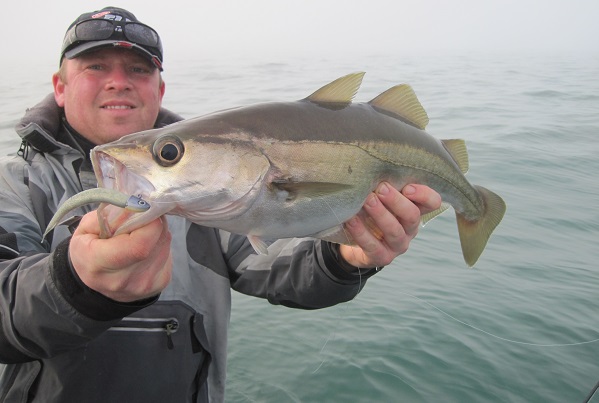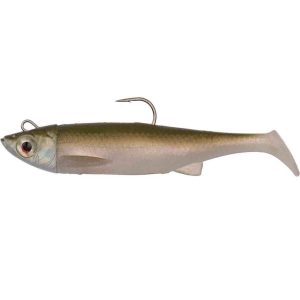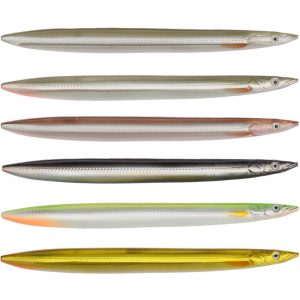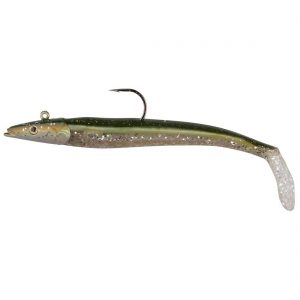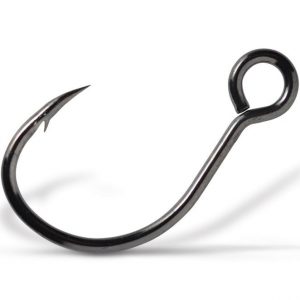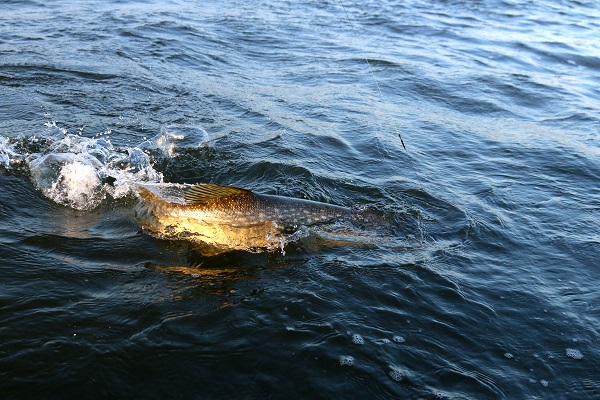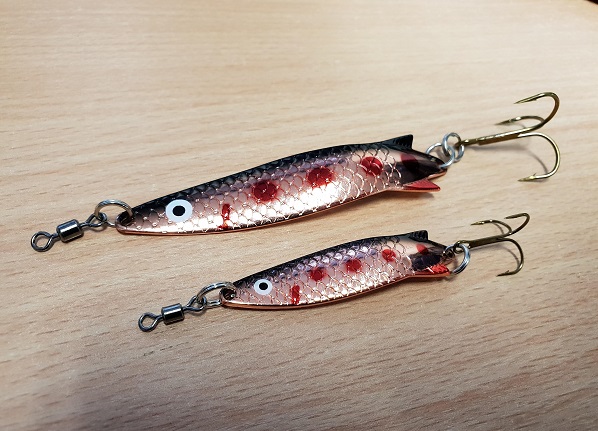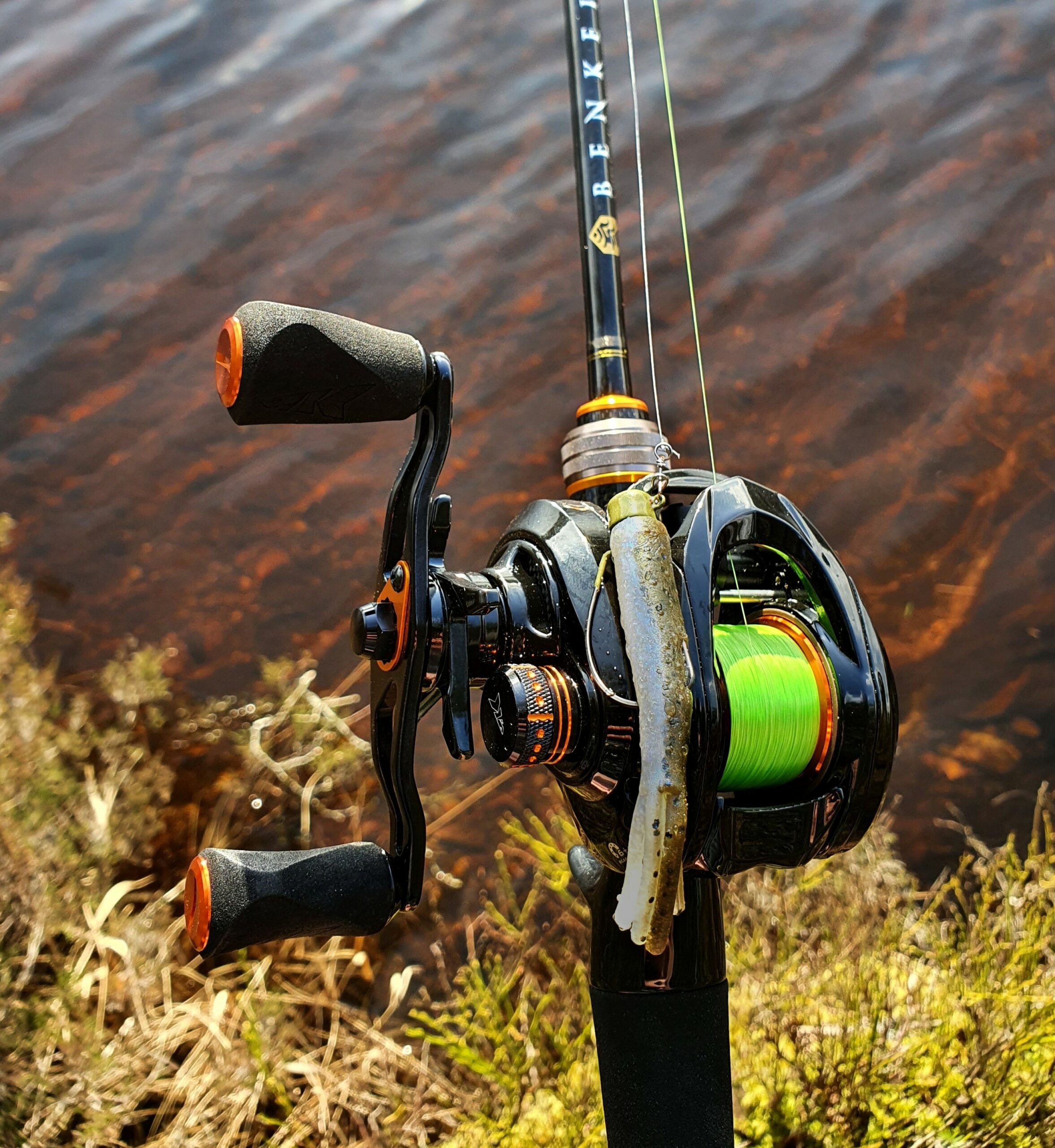Pollock have gained a reputation within the sea angling fraternity as being one of the hardest fighting pound for pound fish. Mainly targeted using lure tactics in Spring and Autumn, in this article we will give you the knowledge to start your pollock lure fishing campaign.
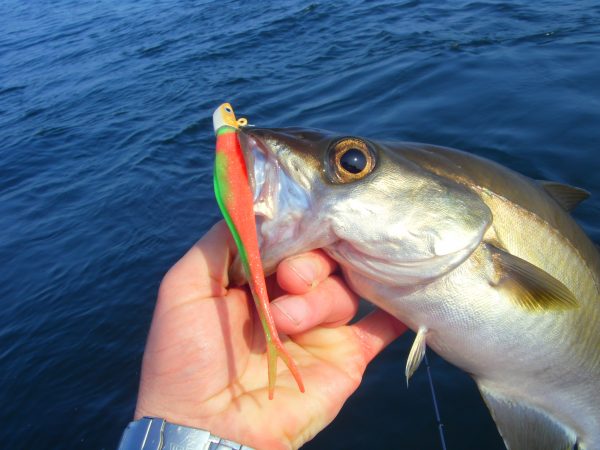
ROD & REEL
We recommend a lure rod with a 10 – 40 gram cast weight, with a fast action which will provide you with the backbone to bully fish out of dense kelp beds/rocky marks. While still offering good sensitivity and feedback through the rod tip and the rod blank itself. This will allow you to feel what structure your lure is working over. Match this with a 3000 size fixed spool reel and you’re ready to rock!
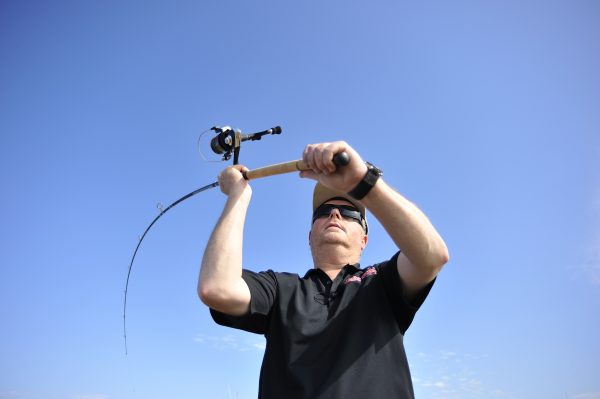
A powerful fast action rod can assist casting light lures into a head wind.
LINE
Go with a braided mainline over a monofilament line. The braided main line offers a higher breaking strain in a lower diameter compared to a monofilament line of the same breaking strain. The braided line will not only help aid casting distance but will provide better feedback and sensitivity while working lures over heavy structure. The thinner diameter braided line will also allow your lure to reach the bottom quicker as it will cut through the swell easier. We recommend 20 – 30lb breaking strain line.

Braid allows you to keep in constant contact with your lure.
TOP TIP
Using braid with a fast action lure rod means you have the ability to feel the lure hitting structure, this means that you can quickly jig the lure up and have it working just above the kelp. Jigging the lure above the kelp and letting it fall on a tight line until it bumps the kelp can be a very effective method to trigger pollock to take when the bite is hard.
LEADER MATERlAL
Using a fluorocarbon leader will provide a certain amount of abrasion resistance and protection to your braided main line – especially over rocky terrain. It also provides a stealthy presentation due to its low visibility properties. We recommend using a 2 – 3 ft, 15 – 20lb fluorocarbon leader.

A decent fluorocarbon leader can take punishment from the rough terrain.
LURES FOR POLLOCK
Lure fishing from rocky marks is one of the most successful methods to catch pollock. They will take a variety of lures from small metal slimline jigs to soft plastic lures that resemble a sand eel. Artificial eels and soft plastic worms are the most successful of the pollock lures.
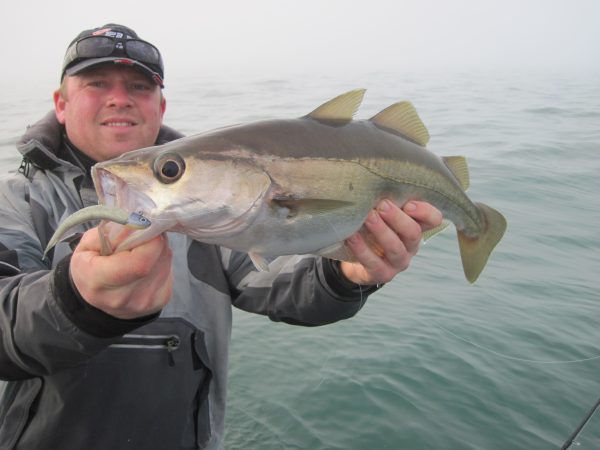
This big pollock nailed a sand eel imitation.
Pollock do not shy away from a lure presented on a Texas Rig or Carolina rig, due to their ambush, eat and retreat tactic. They do not inspect their prey closely like other sea species like bass.
This makes fishing a lighter lure, like an artificial eel, far easier because you can broaden your lure presentation with the use of texas and Carolina rigs – which also offer weedless properties.
Pre rigged shads are proving a big advantage for this method. Fish the lure or frozen sand eel on a trace of two to three feet or more. However, Pollock will get wise to the same lure passing them regularly, so keep on the move when spinning, therefore covering different ground, and change the lure colour or type.
RECOMMENDED POLLOCK LURES
- Pre rigged shad
- Loose body eel/worm imitation.
- Pre rigged sand eel imitation.
- Metal blade jig
TOP TIP
When fishing with small metal jigs, replace the treble hook with an inline single hook. This will reduce the chance of snagging and will allow you to work your lure over the top of vegetation such as kelp.
LOCATION
Pollock like most fish species like structure. Look for marks that contain reefs, inshore wrecks, broken ground or dense vegetation – these areas are good starting points! Kelp beds can provide good sport during the summer and autumn months and are the most common area’s anglers target the species. These areas attract baitfish during high tide and force them into these areas to seek cover from predators, making for ideal ambush points for big pollock.
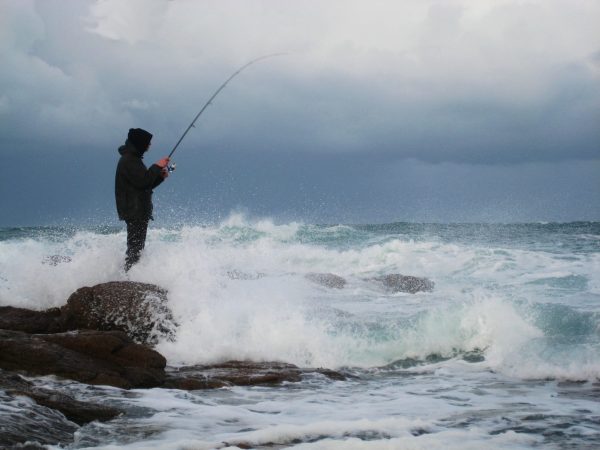
Kelp beds and rocky, broken ground are ideal pollock habitat.
TOP TIP
Balancing and matching your fishing tackle to the environment, prey and conditions are very important if you want to get the best out of your pollock fishing.
If you require any more tips or information on pollock lure fishing, please contact the Angling Active team. We are more than happy to help.

